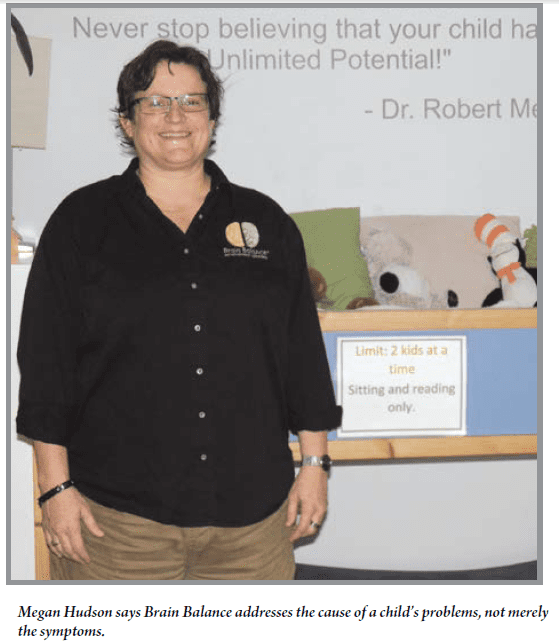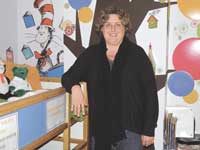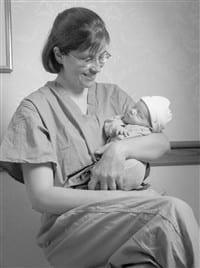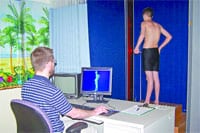An Integrated Approach – Brain Balance Program Addresses Problems, Not the Symptoms
At age 5, Ryan Hodges couldn’t ride a bike. He fell down frequently, couldn’t stay focused, had difficulty sitting still, and never stopped talking.
“He was easily frustrated, cried a lot and had bad tantrums,” said his mother, Pennie Hodges, adding that his pediatrician told her his muscles and nervous system hadn’t caught up with each other.
By the time Ryan was 8, the problems had exacerbated. He was still uncoordinated, talked incessantly, approached strangers without fear, and was being bullied at school. “He couldn’t read facial expressions so if someone was angry he didn’t recognize it,” Pennie said. “And even though there was so much that was wrong, his school told us he tried very hard to behave. But it exhausted him and when he got off the bus, all of his frustration would come out and he would have a tantrum.”
By that time, Ryan had been diagnosed with Attention Deficit Disorder with Hyperactivity. His parents had sought help for his behavior, and when he was unable to perform moves in a Tae Kwon Do class and the instructor suggested he visit a chiropractor, they took him there. It was a life-changing experience because the chiropractor told them Ryan had an imbalance in his brain hemispheres and recommended they seek help from the Brain Balance Achievement Center in West Springfield.
After spending three months in their program, he was a different child.
“We could go places without worrying about him wandering off, and go to a movie without having him talk continuously. He began making friends in school and began to excel in Tae Kwon Do,” Pennie told HCN.
“And today, he loves playing with Legos, which is something he could never do before because he was too uncoordinated to put the pieces together.”
Megan Hudson, a chiropractor who owns the Brain Balance franchise in West Springfield, said the Hodges’ story is not unusual.
“Our program is based on the field known as functional neurology,” she said, explaining that most learning and behavior problems result from Functional Disconnection Syndrome, or an imbalance between the right and left hemispheres of the brain.
The left hemisphere controls positive emotions, linear and logical thinking, details, conscious actions, memory, learning, auditory processing, and fine motor skills. The right hemisphere gives people the ability to look at the “big picture,” and is the non-verbal side responsible for negative emotions, understanding abstract concepts, unconscious actions, memory, learning, tactile processing, and the large muscles in the body.
Hudson said that when the hemispheres in the brain are balanced, both sides are equally strong and communicate continuously through neural-pathways, which connect one part of the nervous system to the other. But if one side of the brain matures at a faster pace than the other, the weak side misses signals, which interferes with coordination and a child’s ability to make friends, control their emotions, and behave appropriately.

“Children with brain imbalances have learning, behavioral, and social challenges,” said Brain Balance Center Director Talitha Abramsen. “They may be bullies or be bullied in school, and have problems with anxiety and making friends. They tend to be very isolated as a result.
“Many of the families who come to us don’t know what to do — their child is struggling and acting out in class, or has a hard time sitting still and is not performing as well academically as he should,” she went on, explaining that children they work with often have been diagnosed with Attention Deficit Disorder with Hyperactivity, or ADHD; autism; obsessive compulsive disorder; anxiety; or Asperger’s Syndrome, which is on the autism spectrum.
“Many parents tell us that their child can’t focus. Some do well in school, but then they come home and have tantrums and meltdowns,” Abramsen said.
For this issue and its focus on behavioral health, HCN takes an in-depth look at the Brain Balance program and why it has been able to help script success stories enjoyed by families like the Hodges.
Inner Workings
Brain Balance was founded by Robert Melillo, who was Hudson’s teacher and mentor.
“He’s a chiropractor who specializes in childhood developmental disorders. In the late 90s, he began to realize that kids with autism and ADHD had weak right brain hemispheres,” Hudson said, adding that he wrote the book titled Disconnected Kids: The Groundbreaking Brain Balance Program for Children with Autism, AD/HD, Dyslexia and Other Neurological Disorders, and worked with Frederick Carrick, a Canadian-American chiropractic neurologist who is considered the father of modern chiropractic neurology.
The book shows parents how to work with children who have neurobehavioral disorders. It is a drug-free approach, and Melillo put the techniques into practice when he opened the first Brain Balance Center in 2007, which incorporated findings from his research.
Today there are 70 franchises across the country. Programs are held after-school three days a week for a three-month session.
Hodges drove for an hour each way so Ryan could participate, which Abramsen said is not unusual. “One family that lives in Burlington, Vermont, traveled three hours and 15 minutes each way, three days a week for a year, so their child could attend sessions,” she told HCN.
Treatment incorporates three modalities: neuro-academic activities, sensory-motor activities and exercises, and bio-nutrition. The latter is used to correct biochemical imbalances and food sensitivities, as well as vitamin, mineral and amino acid deficiencies, which is important as Hudson said children with functional disconnections, or brain imbalances, are usually finicky eaters and may not be absorbing nutrients well.
The academic portion of the program differs from tutoring because it addresses deficits in cognitive skills by stimulating growth and development in the area of the brain that controls those functions.
“We’re not simply focused on math or reading. Instead, we address the imbalance which causes learning to be difficult,” Abramsen said, explaining that the lessons each child receives are carefully chosen to stimulate the weaker side of the brain.
Sensory motor activities are also critical and represent the core of the plan. Abramsen said that although no child has the same program, activities in their gym are always done in pairs, and each child completes 15 to 20 exercises in a half hour.
“Children are matched very carefully and face each other while they are doing the exercises. It activates the part of the brain that helps them tune into others,” she noted.
This portion of the program addresses muscle tone, strength, bilateral coordination, rhythm and timing, eye-muscle balance, vestibular balance, posture, and more.
However, other treatment modalities are incorporated into each child’s plan. “We have children listen to specific types of music,” said Hudson. “Listening to instrumentals without words stimulates the right side of the brain, while music with lyrics stimulates the left hemisphere of the brain.”
Comprehensive Program
The program at Brain Balance is designed for children and young adults ages 4 to 20. It begins with a comprehensive assessment, which includes evaluating their sensory and motor skills and physical coordination, as well as their academic and cognitive skills. The testing takes four to five hours and measures balance, eye-hand coordination, listening skills, eye movement, and other things, such as the child’s sense of rhythm.
“We want to see what their brain age is,” Hudson said. “A child may be able to hear well, but not be able to listen. For example, we saw a 13-year-old boy who had the cognitive skills of a 12-year-old and the sensory/motor skills of a 9-year-old, which led to constant frustration. He struggled socially, didn’t have any friends and wasn’t interested in sports.”
Parents are also asked to provide detailed information about their child, including their history and descriptions of their behavior. The results determine whether the child can benefit from the program.
If they are accepted into it, an individual customized plan is created for them. “It is designed to strengthen the weaker hemisphere of the brain and change the relationship between the two hemispheres,” Hudson said. “We address the cause of the problem, not just the symptoms.”
Imbalances in the brain can be seen in the body and in the way a child behaves, Hudson said.
“A child with Asperger’s Syndrome who has a very strong left brain may know a lot of information and be an expert in dinosaurs. But if the right side of the brain is weak, it can result in inappropriate social behavior, so the child will talk about them in depth without knowing he is boring other people,” she explained. “And a child with ADHD may be incredibly creative, but have a difficult time focusing because their right brain hemisphere doesn’t work well. If different regions of the brain don’t function together appropriately, it can lead to delays in development.”
But there are usually early indications that something is wrong.
“If a child in kindergarten can’t cut paper, undo buttons, use a pencil correctly, or tie their shoes, it is a red flag. And if they have a brain imbalance that goes untreated, the child could end up as a teenager whose brain is functioning at a 9-year-old level, which results in anger and frustration,” Abramsen said. “Parents come to us who want a fix for behavioral, social, or academic problems. But they are only a symptom that something is wrong. There are deeper issues going on under the surface.”
Hudson said addressing the brain/body connection is the answer.
“When balance is restored, learning occurs naturally, and the children we work with end up with much better self control,” she said. “Frustration leads to meltdowns and tantrums that are the result of a disconnect within the brain. We have seen families who have tried putting their children in activities ranging from soccer to karate, tutoring to dance. They are helpful, but they don’t change the underlying imbalance.”
Abramsen agreed, and used a plastic bottle to explain the term “neuroplasticity” of the brain. “If the bottle is heated to a high temperature, it changes shape and the original shape never returns. And if the brain is given appropriate stimulation, it also changes,” she said.
Successful Outcomes
Hodges is thankful she discovered Brain Balance and said the changes in her son have been profound. Although she admits she was somewhat skeptical when she and her husband first signed him up for the program, the assessment “opened my eyes to what was wrong; this gets to the root of the problem and helps children overcome it,” she said.
Hudson concurred, and said the sensory motor activities are critical since many children with Functional Disconnect Syndrome live sedentary lives due to their lack of social skills and/or coordination.
“When their brains aren’t balanced, kids often withdraw, lash out, have meltdowns or become depressed,” she said. “The magic comes from the activities we use to stimulate the weak brain hemisphere. It’s what makes us unique.”




